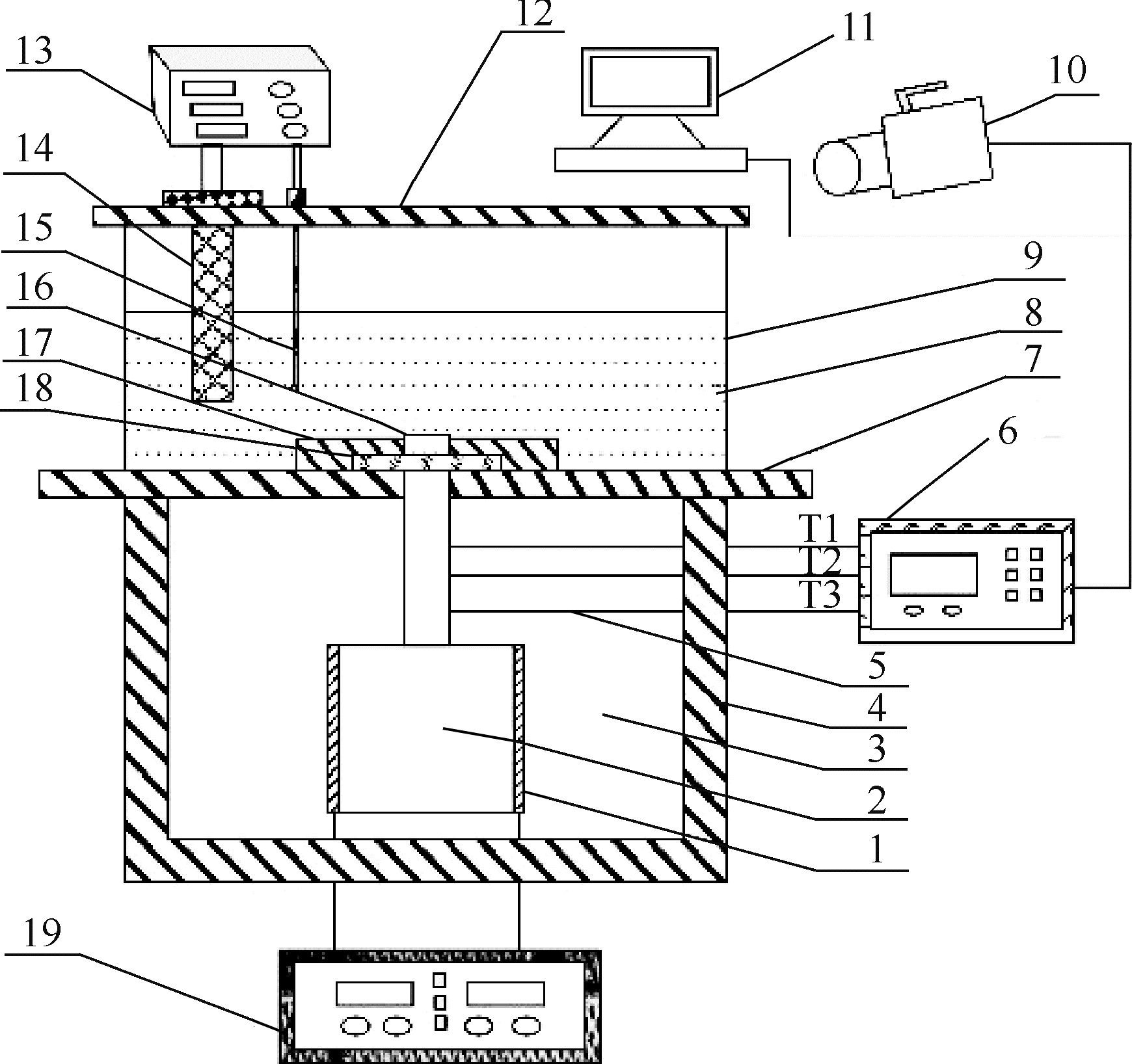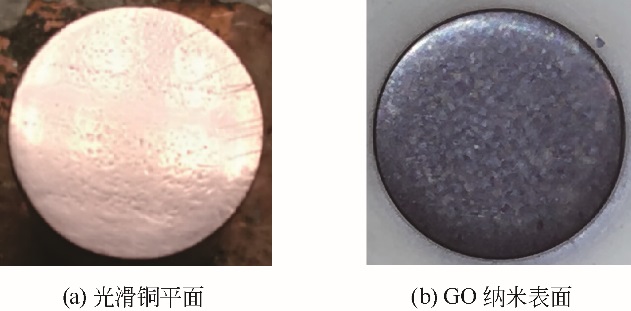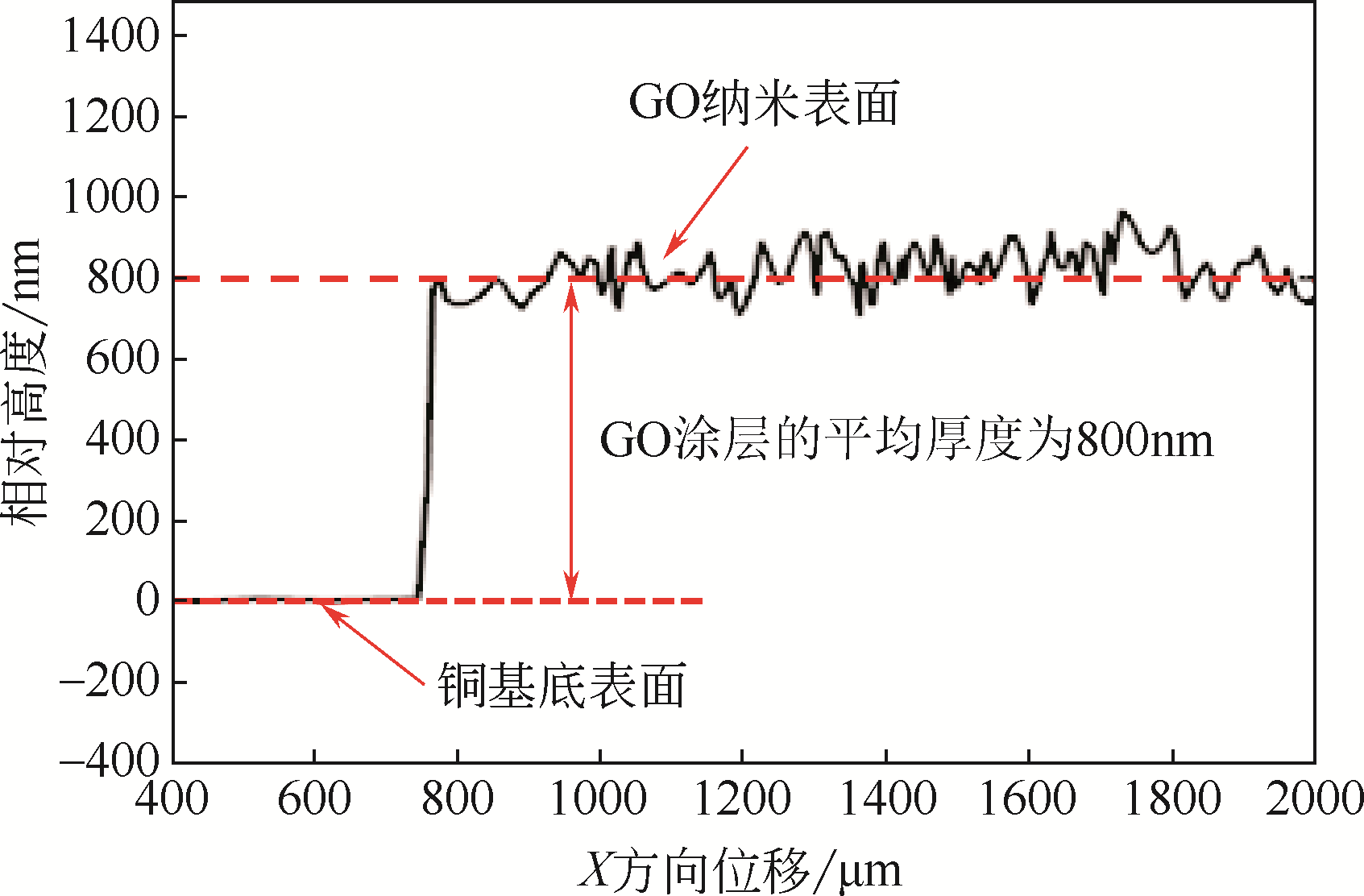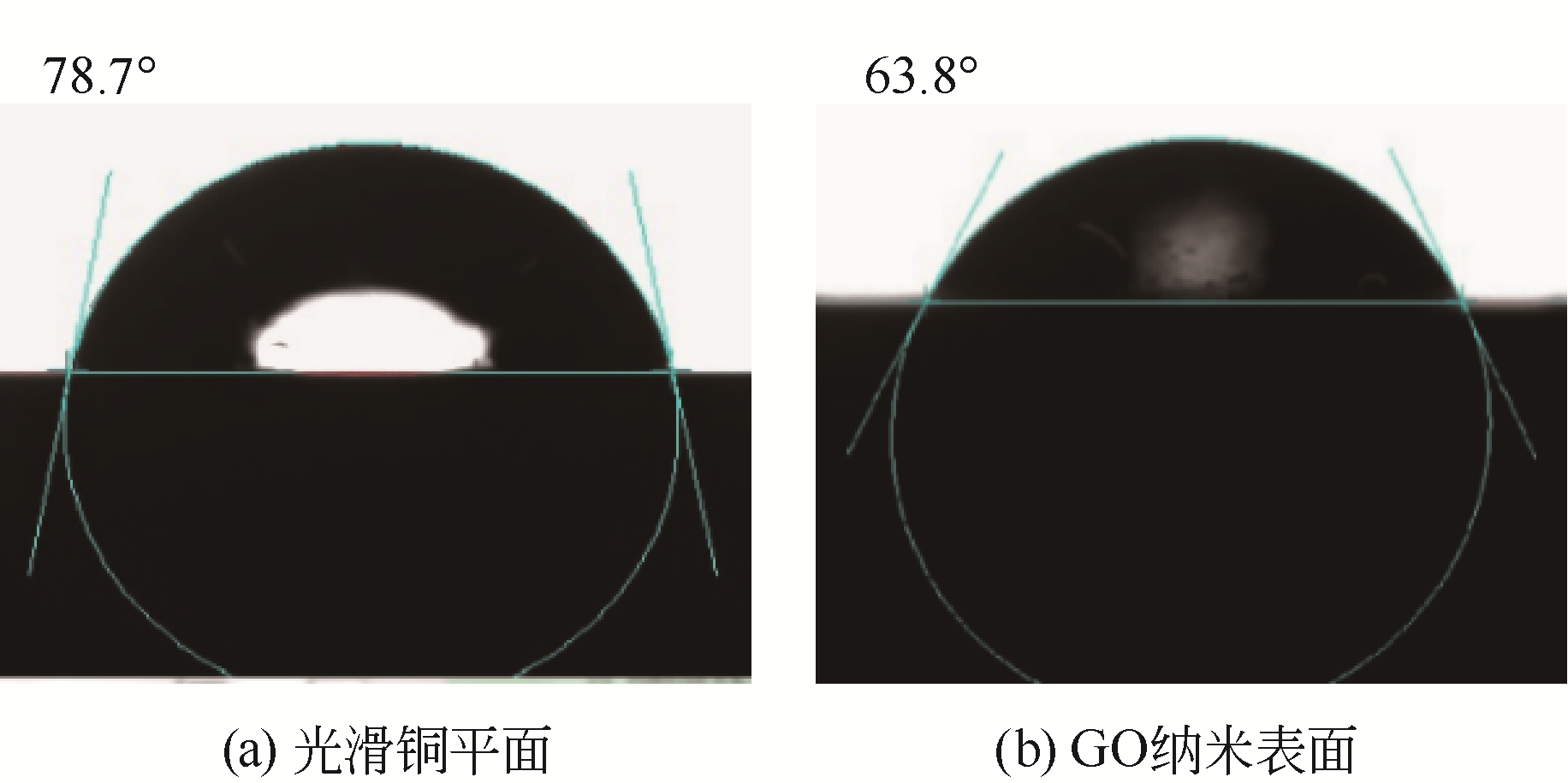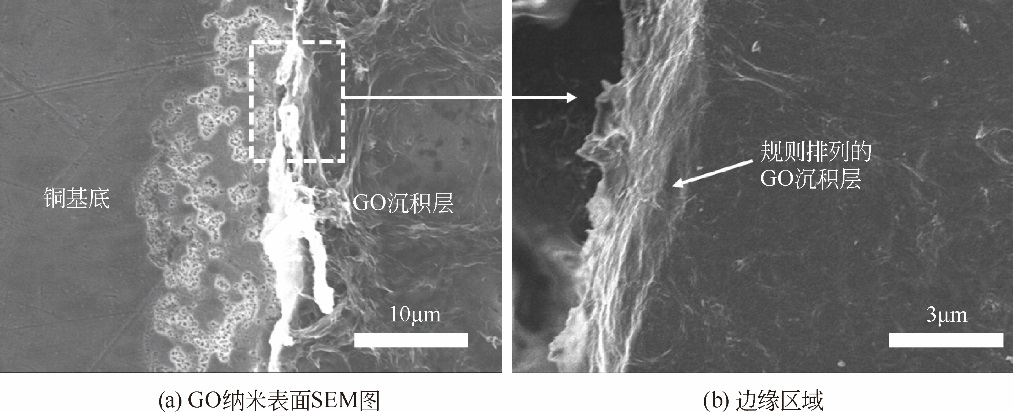化工进展 ›› 2019, Vol. 38 ›› Issue (9): 4164-4173.DOI: 10.16085/j.issn.1000-6613.2018-2398
氧化石墨烯表面的饱和池沸腾强化传热实验
毛兰1,2( ),周文斌1(
),周文斌1( ),胡学功1,2(
),胡学功1,2( ),何雨1,2,张桂英1,单龙1
),何雨1,2,张桂英1,单龙1
- 1. 中国科学院工程热物理研究所,北京 100190
2. 中国科学院大学,北京 100049
-
收稿日期:2018-12-11出版日期:2019-09-05发布日期:2019-09-05 -
通讯作者:周文斌,胡学功 -
作者简介:毛兰(1993—),女,博士研究生,研究方向为微纳尺度传热学。E-mail:maolan@iet.cn 。 -
基金资助:国家重点研发计划(2017YFB0403200)
Enhanced pool boiling heat transfer performance on graphene oxide nanocoating surface
Lan MAO1,2( ),Wenbin ZHOU1(
),Wenbin ZHOU1( ),Xuegong HU1,2(
),Xuegong HU1,2( ),Yu HE1,2,Guiying ZHANG1,Long SHAN1
),Yu HE1,2,Guiying ZHANG1,Long SHAN1
- 1. Institute of Engineering Thermophysics, Chinese Academy of Sciences, Beijing 100190, China
2. University of Chinese Academy of Sciences, Beijing 100049, China
-
Received:2018-12-11Online:2019-09-05Published:2019-09-05 -
Contact:Wenbin ZHOU,Xuegong HU
摘要:
利用氧化石墨烯(GO)纳米片沸腾自组装法(self-assembly)制备出GO纳米表面,以蒸馏水为液体工质,对常压下GO纳米表面和光滑铜平面的饱和池沸腾换热特性进行了对比实验研究,并用高速摄像机拍摄了汽泡的动态行为。结果表明,GO纳米表面降低了换热壁面的过热度,其临界热流密度(CHF)和换热系数(HTC)分别达到了208W/cm2和7.25W/(cm2?K),较光滑铜平面分别提高了66.4%和86.9%。分析认为,是铜基底表面沉积的润湿性优异的高导热二维GO层状结构促使了CHF提高。汽泡可视化观察发现,相比于光滑铜平面,较低热流密度时,相同热流下GO纳米表面上汽泡脱离直径较小,脱离频率较高,汽化核心增多;较高热流密度时,光滑铜平面汽泡合并现象更严重,即GO纳米表面能延缓导致CHF产生的表面蒸汽膜的出现。
中图分类号:
引用本文
毛兰,周文斌,胡学功,何雨,张桂英,单龙. 氧化石墨烯表面的饱和池沸腾强化传热实验[J]. 化工进展, 2019, 38(9): 4164-4173.
Lan MAO,Wenbin ZHOU,Xuegong HU,Yu HE,Guiying ZHANG,Long SHAN. Enhanced pool boiling heat transfer performance on graphene oxide nanocoating surface[J]. Chemical Industry and Engineering Progress, 2019, 38(9): 4164-4173.
| 实验参数 | 最大不确定度 |
|---|---|
| T 1 、T 2 、T 3 | ±0.2K |
| t 0 、t 1 、t 2 | ±0.01mm |
| q″ | 4.6% |
| h | 6.5% |
表1 实验测量误差
| 实验参数 | 最大不确定度 |
|---|---|
| T 1 、T 2 、T 3 | ±0.2K |
| t 0 、t 1 、t 2 | ±0.01mm |
| q″ | 4.6% |
| h | 6.5% |
| 26 | JAIKUMAR A , GUPTA A , KANDLIKAR S G , et al . Scale effects of graphene and graphene oxide coatings on pool boiling enhancement mechanisms[J]. International Journal of Heat and Mass Transfer, 2017, 109: 357-366. |
| 27 | ZUBER N . Hydrodynamic aspects of boiling heat transfer[D].Los Angeles: University of California, 1959. |
| 28 | ROHSENOW W . A method of correlating heat-transfer data for surface boiling of liquids[M]. Cambridge : M.I.T. Division of Industrial Cooporation, 1951, 74. |
| 29 | KIM T , KIM J M , KIM J H , et al . Orientation effects on bubble dynamics and nucleate pool boiling heat transfer of graphene-modified surface[J]. International Journal of Heat and Mass Transfer, 2017, 108: 1393-1405. |
| 30 | KIM K M , BANG I C . Effects of graphene oxide nanofluids on heat pipe performance and capillary limits[J]. International Journal of Thermal Sciences, 2016, 100: 346-356. |
| 31 | KIM J H , KIM J M , JERNG D W , et al . Effect of aluminum oxide and reduced graphene oxide mixtures on critical heat flux enhancement[J]. International Journal of Heat and Mass Transfer, 2018, 116: 858-870. |
| 32 | 张伟, 牛志愿, 李亚, 等 . 石墨烯/镍复合微结构表面的池沸腾传热特性[J]. 化工进展, 2018, 37(10): 3759-3764. |
| ZHANG W , NIU Z Y , LI Y ,et al . Pool boiling heat transfer characteristics on graphene/nickel composite microstructures[J]. Chemical Industry and Engineering Progress, 2018, 37(10): 3759-3764. | |
| 33 | THEOFANOUS T G , DINH T N , TU J P , et al . The boiling crisis phenomenon - part II: Dryout dynamics and burnout[J]. Experimental Thermal and Fluid Science, 2002, 26(6/7): 793-810. |
| 34 | KIM S J , BANG I C , BUONGIORNO J , et al . Effects of nanoparticle deposition on surface wettability influencing boiling heat transfer in nanofluids[J]. Applied Physics Letters, 2006, 89(15): 153107. |
| 35 | SADASIVAN P , CHAPPIDI P R , UNAL C , et al . Possible mechanisms of macrolayer formation[J]. International Communications in Heat and Mass Transfer, 1992, 19(6): 801-815. |
| 36 | WANG C H , DHIR V K . Effect of surface wettability on active nucleation density during pool boiling of water on a vertical surface[J]. Journal of Heat Transfer-Transactions of the Asme, 1993, 115(3): 659-669. |
| 1 | GOLOBIC I , PETKOVSEK J , KENNING D B R . Bubble growth and horizontal coalescence in saturated pool boiling on a titanium foil, investigated by high-speed ir thermography[J]. International Journal of Heat and Mass Transfer, 2012, 55(4): 1385-1402. |
| 2 | MCHALE J P , GARIMELLA S V . Bubble nucleation characteristics in pool boiling of a wetting liquid on smooth and rough surfaces[J]. International Journal of Multiphase Flow, 2010, 36(4): 249-260. |
| 37 | AHN H S, KIM J M , KIM T , et al . Enhanced heat transfer is dependent on thickness of graphene films: the heat dissipation during boiling[J]. Sci. Rep., 2014, 4: 6276. |
| 38 | ARIK M , BAR-COHEN A . Effusivity-based correlation of surface property effects in pool boiling CHF of dielectric liquids[J]. International Journal of Heat and Mass Transfer, 2003, 46(20): 3755-3764. |
| 39 | ANDRIKOPOULOS K S , BOUNOS G , TASIS D , et al . The effect of thermal reduction on the water vapor permeation in graphene oxide membranes[J]. Advanced Materials Interfaces, 2014, 1(8): 082402-082410. |
| 40 | KIM J M , KIM J H , KIM M H , et al . Nanocapillarity in graphene oxide laminate and its effect on critical heat flux[J]. Journal of Heat Transfer-Transactions of the ASME, 2017, 139(8): 082402-082410. |
| 3 | MICHAIE S , RULLIèRE R , BONJOUR J . Experimental study of bubble dynamics of isolated bubbles in water pool boiling at subatmospheric pressures[J]. Experimental Thermal and Fluid Science, 2017, 87: 117-128. |
| 4 | MINSEOK H , GRAHAM S . Pool boiling characteristics and critical heat flux mechanisms of microporous surfaces and enhancement through structural modification[J]. Applied Physics Letters, 2017, 111(9): 091601. |
| 5 | KAMATCHI R . Experimental investigations on nucleate boiling heat transfer of aqua-based reduced graphene oxide nanofluids[J]. Heat and Mass Transfer, 2017, 54(2): 437-451. |
| 6 | FORSTER H K , ZUBER N . Dynamics of vapor bubbles and boiling heat transfer[J]. AIChE Journal, 1955, 1(4): 531-535. |
| 7 | KANDLIKAR S G . A theoretical model to predict pool boiling CHF incorporating effects of contact angle and orientation[J]. Journal of Heat Transfer-Transactions of the Asme, 2001, 123(6): 1071-1079. |
| 8 | ZHAO Y H , MASUOKA T , TSURUTA T . Unified theoretical prediction of fully developed nucleate boiling and critical heat flux based on a dynamic microlayer model[J]. International Journal of Heat and Mass Transfer, 2002, 45(15): 3189-3197. |
| 9 | ZHANG Y , ZHOU J , ZHOU W , et al . CHF correlation of boiling in FC-72 with micro-pin-fins for electronics cooling[J]. Applied Thermal Engineering, 2018, 138: 494-500. |
| 10 | CAO Z , LIU B , PREGER C , et al . Pool boiling heat transfer of FC-72 on pin-fin silicon surfaces with nanoparticle deposition[J]. International Journal of Heat and Mass Transfer, 2018, 126: 1019-1033. |
| 11 | AHN H S, LEE C, KIM H , et al . Pool boiling CHF enhancement by micro/nanoscale modification of zircaloy-4 surface[J]. Nuclear Engineering and Design, 2010, 240(10): 3350-3360. |
| 12 | 莫冬传, 张晖, 吕树申 . TiO2纳米管阵列表面的池沸腾实验[J]. 化工学报, 2014, 65 (s1): 308-315. |
| MO D C , ZHANG H , LU S S . Pool boiling experiment on TiO2 nanotube array surface[J]. CIESC Journal, 2014, 65 (s1): 308-315. | |
| 13 | JANG W , CHEN Z , BAO W , et al . Thickness-dependent thermal conductivity of encased graphene and ultrathin graphite[J]. Nano Letters, 2010, 10(10): 3909-3913. |
| 14 | AHN H S, KIM J M , KAVIANY M , et al . Pool boiling experiments in reduced graphene oxide colloids. Part I - boiling characteristics[J]. International Journal of Heat and Mass Transfer, 2014, 74: 501-512. |
| 15 | AHN H S, KIM J M , KAVIANY M , et al . Pool boiling experiments in reduced graphene oxide colloids part II - behavior after the chf, and boiling hysteresis[J]. International Journal of Heat and Mass Transfer, 2014, 78: 224-231. |
| 16 | AHN H S, KIM J M , KIM M H . Experimental study of the effect of a reduced graphene oxide coating on critical heat flux enhancement[J]. International Journal of Heat and Mass Transfer, 2013, 60: 763-771. |
| 17 | SEO H, CHU J H , KWON S Y , et al . Pool boiling CHF of reduced graphene oxide, graphene, and SiC-coated surfaces under highly wettable FC-72[J]. International Journal of Heat and Mass Transfer, 2015, 82: 490-502. |
| 18 | SEO H, YUN H D , KWON S Y , et al . Hybrid graphene and single-walled carbon nanotube films for enhanced phase-change heat transfer[J]. Nano Letters, 2016, 16(2): 932-938. |
| 19 | KUANG D , XU L , LIU L , et al . Graphene-nickel composites[J]. Applied Surface Science, 2013, 273: 484-490. |
| 20 | AN S , KIM D-Y , J-G LEE , et al . Supersonically sprayed reduced graphene oxide film to enhance critical heat flux in pool boiling[J]. International Journal of Heat and Mass Transfer, 2016, 98: 124-130. |
| 21 | PARK S S , KIM Y H , JEON Y H , et al . Effects of spray-deposited oxidized multi-wall carbon nanotubes and graphene on pool-boiling critical heat flux enhancement[J]. Journal of Industrial and Engineering Chemistry, 2015, 24: 276-283. |
| 22 | PARK S D , LEE S W, KANG S , et al . Effects of nanofluids containing graphene/graphene-oxide nanosheets on critical heat flux[J]. Applied Physics Letters, 2010, 97(2): 023103. |
| 23 | SINGH E , CHEN Z , HOUSHMAND F , et al . Superhydrophobic graphene foams[J]. Small, 2013, 9(1): 75-80. |
| 24 | KIM J M , KIM J H , PARK S C , et al . Nucleate boiling in graphene oxide colloids: morphological change and critical heat flux enhancement[J]. International Journal of Multiphase Flow, 2016, 85: 209-222. |
| 25 | KIM J M , KIM T , KIM J , et al . Effect of a graphene oxide coating layer on critical heat flux enhancement under pool boiling[J]. International Journal of Heat and Mass Transfer, 2014, 77: 919-927. |
| 41 | 刁彦华, 赵耀华, 王秋良 . R-113池沸腾气泡行为的可视化及传热机理[J]. 化工学报, 2005, 56(2): 227-234. |
| DIAO Y H , ZHAO Y H , WANG Q L . Bubble dynamics and heat transfer mechanism of pool boiling of R-113[J]. CIESC Journal, 2005, 56(2): 227-234. |
| [1] | 胡喜, 王明珊, 李恩智, 黄思鸣, 陈俊臣, 郭秉淑, 于博, 马志远, 李星. 二硫化钨复合材料制备与储钠性能研究进展[J]. 化工进展, 2023, 42(S1): 344-355. |
| [2] | 许春树, 姚庆达, 梁永贤, 周华龙. 共价有机框架材料功能化策略及其对Hg(Ⅱ)和Cr(Ⅵ)的吸附性能研究进展[J]. 化工进展, 2023, 42(S1): 461-478. |
| [3] | 徐若思, 谭蔚. C形管池沸腾两相流流场模拟与流固耦合分析[J]. 化工进展, 2023, 42(S1): 47-55. |
| [4] | 肖辉, 张显均, 兰治科, 王苏豪, 王盛. 液态金属绕流管束流动传热进展[J]. 化工进展, 2023, 42(S1): 10-20. |
| [5] | 赵晨, 苗天泽, 张朝阳, 洪芳军, 汪大海. 负压状态窄缝通道乙二醇水溶液传热特性[J]. 化工进展, 2023, 42(S1): 148-157. |
| [6] | 陈林, 徐培渊, 张晓慧, 陈杰, 徐振军, 陈嘉祥, 密晓光, 冯永昌, 梅德清. 液化天然气绕管式换热器壳侧混合工质流动及传热特性[J]. 化工进展, 2023, 42(9): 4496-4503. |
| [7] | 时雨, 赵运超, 樊智轩, 蒋达华. 夏热冬冷地区相变屋面最佳相变温度的实验研究[J]. 化工进展, 2023, 42(9): 4828-4836. |
| [8] | 卜治丞, 焦波, 林海花, 孙洪源. 脉动热管计算流体力学模型与研究进展[J]. 化工进展, 2023, 42(8): 4167-4181. |
| [9] | 张超, 杨鹏, 刘广林, 赵伟, 杨绪飞, 张伟, 宇波. 表面微结构对阵列微射流沸腾换热的影响[J]. 化工进展, 2023, 42(8): 4193-4203. |
| [10] | 汪健生, 张辉鹏, 刘雪玲, 傅煜郭, 朱剑啸. 多孔介质结构对储层内流动和换热特性的影响[J]. 化工进展, 2023, 42(8): 4212-4220. |
| [11] | 王云刚, 焦健, 邓世丰, 赵钦新, 邵怀爽. 冷凝换热与协同脱硫性能实验分析[J]. 化工进展, 2023, 42(8): 4230-4237. |
| [12] | 汤磊, 曾德森, 凌子夜, 张正国, 方晓明. 相变蓄冷材料及系统应用研究进展[J]. 化工进展, 2023, 42(8): 4322-4339. |
| [13] | 董晓珊, 王建, 林法伟, 颜蓓蓓, 陈冠益. 基于钙钛矿氧化物的金属纳米粒子溶出策略:溶出过程、驱动力及控制策略[J]. 化工进展, 2023, 42(6): 3049-3065. |
| [14] | 郭文杰, 翟玉玲, 陈文哲, 申鑫, 邢明. Al2O3-CuO/水混合纳米流体对流传热性能及热经济性分析[J]. 化工进展, 2023, 42(5): 2315-2324. |
| [15] | 刘厚励, 顾中浩, 阳康, 张莉. 3D打印槽道结构槽宽对池沸腾传热特性的影响[J]. 化工进展, 2023, 42(5): 2282-2288. |
| 阅读次数 | ||||||
|
全文 |
|
|||||
|
摘要 |
|
|||||
